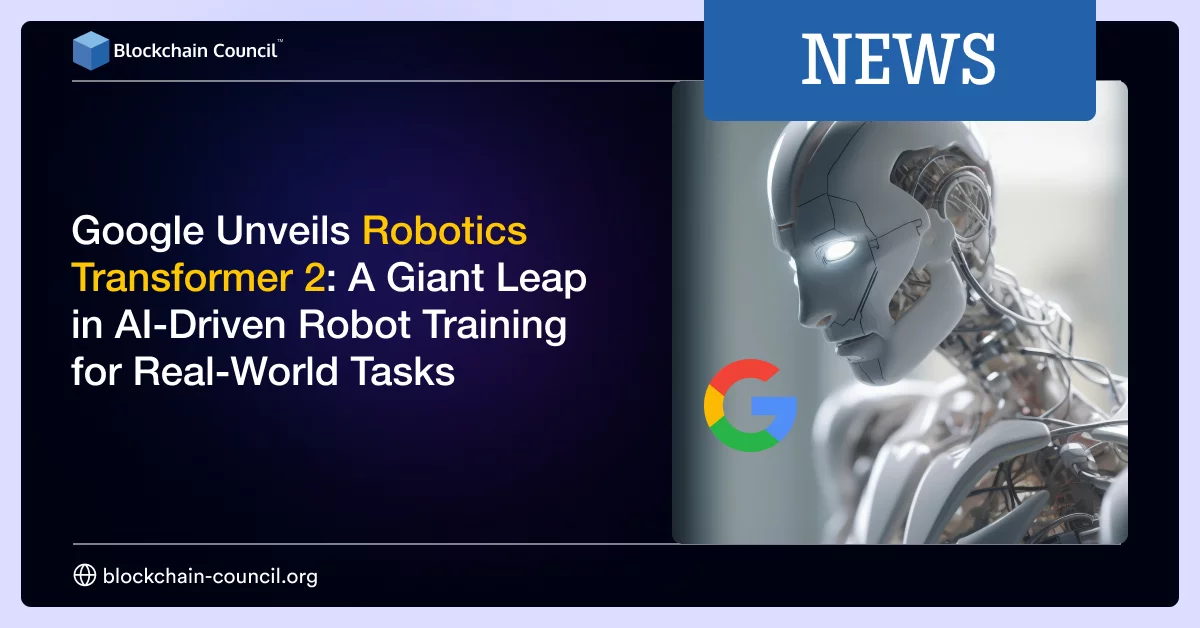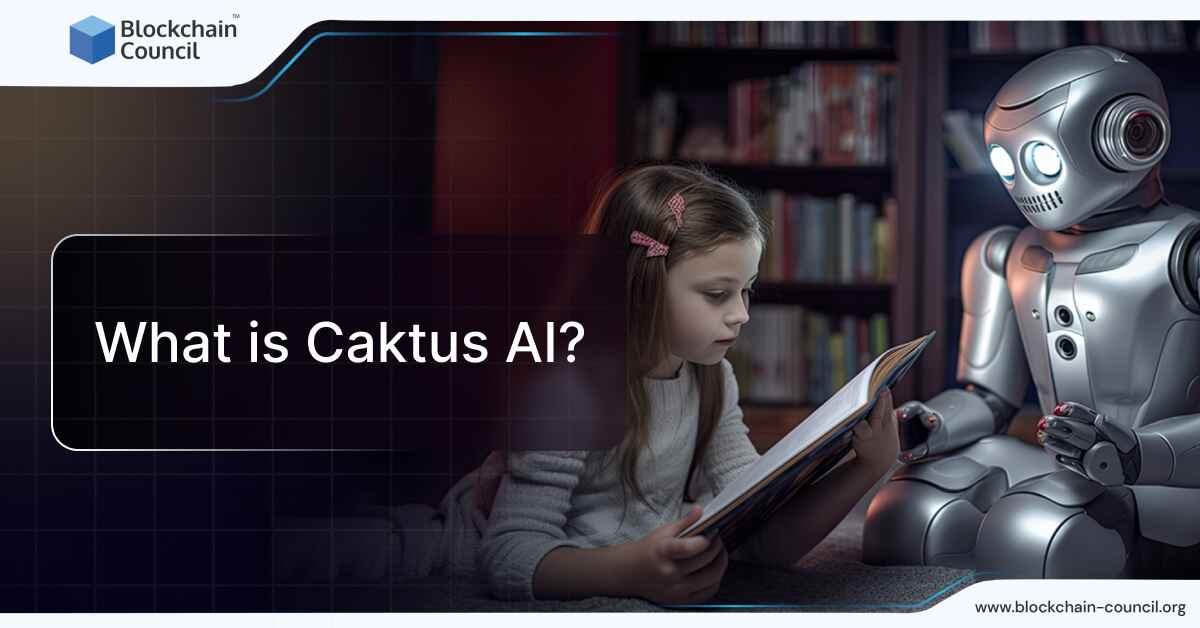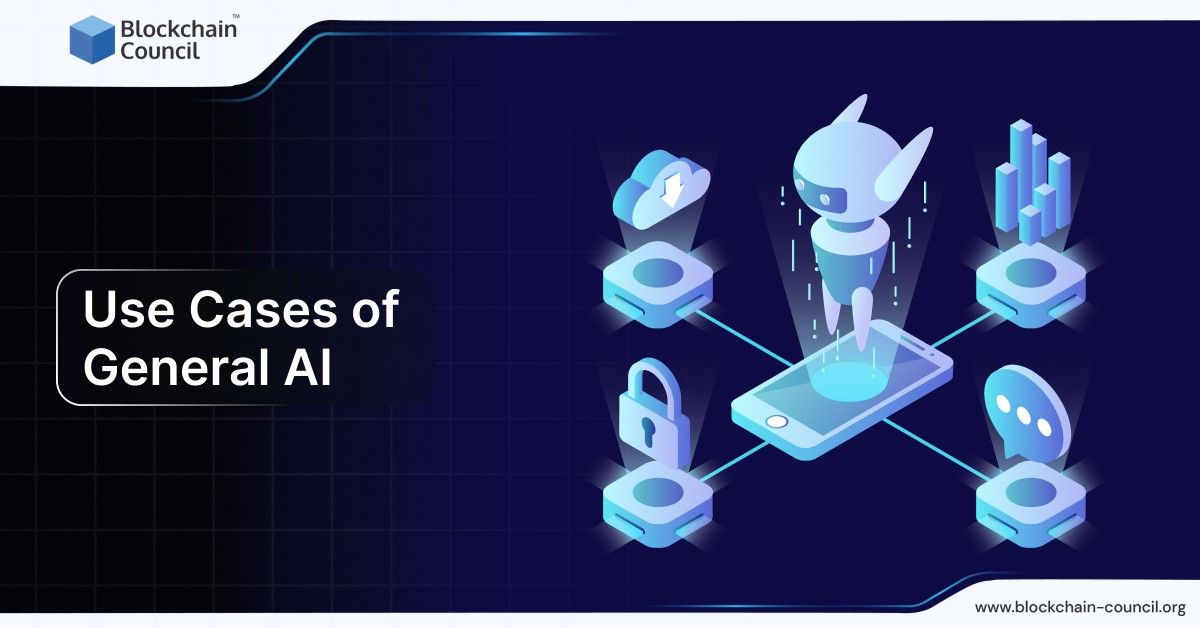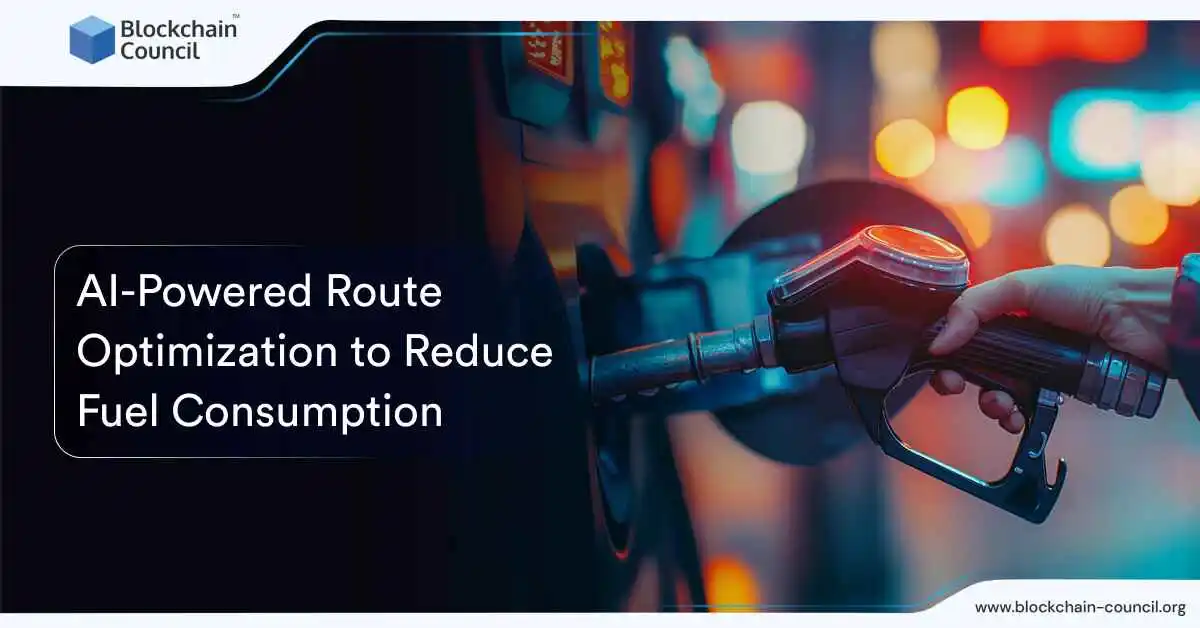
- Blockchain Council
- August 02, 2023
Google, the U.S.-based global tech giant, has unveiled Robotics Transformer 2 (RT-2), an advanced vision-language-action model that represents a significant leap forward in artificial intelligence (AI). This groundbreaking technology equips robots with the ability to comprehend both vision and language, enabling them to perform a diverse range of real-world tasks with ease and efficiency.
RT-2 is a vision-language-action model expertly trained on a vast array of text and images gathered from the internet. By absorbing this extensive dataset, RT-2 gains a deep understanding of general ideas and concepts, empowering robots to complete tasks that include picking up apples or taking out the trash.
Unlike conventional chatbots, RT-2 serves as a knowledge base, allowing it to transfer learned concepts to novel situations, making robots learn more akin to human learning patterns. This advancement signifies the rapid convergence of AI and robotics, demonstrating the immense potential for developing more general-purpose robots.
Earlier this year, Google introduced another significant breakthrough with its self-improving AI agent for robotics, RoboCat. This innovative agent can learn diverse tasks across different contexts, generating new training data to enhance its techniques autonomously. RoboCat’s ability to master new tasks with as few as 100 demonstrations accelerates robotics research by reducing the need for extensive human-supervised training, paving the way for versatile and adaptable robots.
The integration of AI models like RT-2 and RoboCat showcases Google’s commitment to pushing the boundaries of artificial intelligence and its application in robotics. As these cutting-edge technologies mature, the prospects for smarter, more versatile, and autonomous robotic systems become increasingly promising.
Vincent Vanhoucke, Head of Robotics at Google DeepMind, explained that training a robot previously required explicit training for specific tasks, such as identifying and throwing away trash. However, with RT-2’s ability to transfer knowledge from web data, the model already possesses a general understanding of objects like trash and how to handle them, even without explicit training.
RT-2 demonstrates improved generalization capabilities and semantic and visual understanding beyond the robotic data it was exposed to. This includes interpreting new commands and responding to user instructions by performing rudimentary reasoning about object categories or high-level descriptions.
Also read: The Transformative Influence of AI on Decentralized Finance: Exploring the Impact
The potential applications of vision-language-action models like RT-2 are vast. Context-aware robots could perform a diverse range of actions in the real world, considering factors like object type, weight, and fragility. Industries like warehousing, manufacturing, and healthcare stand to benefit from the versatility and adaptability of such robots.
While RT-2 represents a significant advancement, challenges remain in creating fully adaptable and helpful robots for human-centered environments. However, the success of RT-2’s generalization capabilities signals a promising future where robots can learn and adapt more like humans, making them indispensable assets in various applications.
The introduction of Robotics Transformer 2 by Google has brought us one step closer to a future where robots can understand and interact with the real world in a more human-like manner. As AI and robotics continue to evolve, the potential for more intelligent, versatile, and autonomous robots is vast. With RT-2 at the forefront of this transformative journey, we are witnessing the dawn of a new era in robotics, where the boundaries of possibility are continually being pushed.
Also read: The Genius Merger of Blockchain and AI: Why We Need It?





































































 Guides
Guides News
News Blockchain
Blockchain Cryptocurrency
& Digital Assets
Cryptocurrency
& Digital Assets Web3
Web3 Metaverse & NFTs
Metaverse & NFTs
